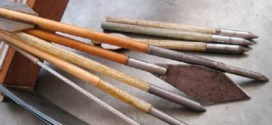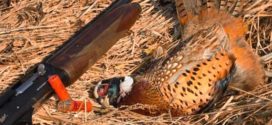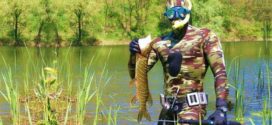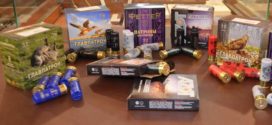In the arsenal of any hunter there is always a shotgun, although most of us have only one. Ammunition for it is available in every specialized store, of all calibers, and they are not in short supply. But many lovers of this type of outdoor recreation, especially experienced ones, prefer to equip cartridges on their own, at home.
Someone lives far from the city, someone is not satisfied with the ratio of the mass of gunpowder and shot in industrial products. The reasons are different, but the general opinion is unequivocal - cartridges equipped at home are more reliable and will never let you down on a hunt. Consider the question of how to properly prepare ammunition for a 12 gauge shotgun.
Content
What you need to equip cartridges
Apothecary scales
They are commercially available, complete with weights. Any model will do - electronic or mechanical. The main condition is the measurement limits (g). The maximum is 50, the minimum is 0.01.
Dispenser or measures
They measure the required amount of shot and gunpowder per charge.
Experienced hunters, who have been engaged in equipping cartridges at home for several days, use paper sleeves cut to a certain level as such. Several of them are being prepared, and they are all labeled. Such a home-made dispenser significantly saves time, since working with scales is a rather lengthy process. Especially when it comes to fifty or more rounds of 12 or other caliber. But such "home-made products" can only be used by experienced hunters! Not recommended for beginner shooters!
Navoynik
Purpose - sending wads and gaskets into the sleeve. The author, for lack of a better one, used a wooden blank, turned on a 12-gauge machine and polished. If its end is somewhat rounded, then it will simultaneously act as a cone, which is necessary to straighten the ends of the fired folder and plastic shells.
OOPS
Without this device, cartridges cannot be equipped. It is needed to "land" the primer in the socket on the head of the sleeve and remove the already used one. Any attempts to push him, score, and so on do not lead to anything good! Not only is there a high probability of triggering the primer, but also the sleeve will become completely unusable.
Rolling device (twist)
After the cartridge is fully equipped, the edges of the sleeve are bent with this device.
Funnel (small)
With its help, it is easy to load a measured amount of gunpowder and shot into the sleeve.
die cutting
Wads for ammunition cartridge can be made independently. For example, from a piece of thick felt. That's what this tool is used for.
Calibration ring
In this case, chambered for 12 gauge. It is necessary to check the accuracy (correctness) of the shape of the ammunition after it is loaded. Often, the hunter twists the edges of the sleeve too hard, which is why it “bursts” a little in the area where the shot is located. It is pointless to take such a cartridge for hunting, since it simply will not enter the bore.
Materials and their features
Powder
It is divided into smoky and smokeless. The latter modification is more popular (for example, "Falcon"), since the use of such ammunition does not lead to contamination of the bore. The author, on the advice of an experienced hunter, is accustomed, even after shooting with “smoky” cartridges, at the end of the hunt, it is imperative to make shots equipped with a “Falcon”.
At one time he was explained that cleaning a hunting rifle with a ramrod is undesirable. Firstly, you can overdo it, and micro-scratches will appear inside the barrel. Secondly, it is unlikely to completely remove the lubricant. If you then shoot with smoky gunpowder, carbon deposits are guaranteed. Well, how to act in practice, decide for yourself, dear reader.
capsules
- "Zhevelo". The most popular type of igniters, suitable for all paper and plastic sleeves.
- "Centroboy". Such capsules are used when equipping brass cartridges.
Bullets, shot (buckshot)
Depending on what kind of game is supposed to be fished. But when hunting, it is desirable to have different types of ammunition, for any occasion. about choosing a good rifle here .
wads
They are either purchased (cardboard, felt), or made at home from a suitable material. How expedient the second option is, one can argue for a long time. But the fact that part of the factory wads have to be rejected, no one will deny.
Gaskets
But it is hardly advisable to mess around with them. Boxes of 200 are inexpensive.
Sleeves
- Metal-paper (folder). Once they were the most common, although they have quite a few shortcomings. Firstly, these sleeves are disposable. To equip them a second time, as a rule, it turns out only one out of five. Secondly, it often breaks when fired, and the remnants of the cartridge have to be literally picked out of the barrel. Thirdly, like any paper product, the cardboard sleeve quickly accumulates moisture. If a hunting trip involves staying in nature for several days, it will be necessary to ensure that the ammunition is reliably isolated from the air during storage.
- Metal-plastic. With careful handling (and equipment) can be used up to 10 - 14 times. The advantage of such sleeves is that they do not get wet.
- All-metal (brass). They can be equipped multiple times. However, the total weight of the ammunition load is such that these shells are rarely used for any type of sea hunting, in the amount of only a few pieces. And then, for an amateur. But for ambush, this is unprincipled. The only thing that is needed is regular inspection of brass sleeves and cleaning them from oxide and soot.
Cartridge Loading Order
The workplace needs to be prepared. As a rule, ammunition is loaded on a table, which must be freed from everything superfluous (foreign). Working with gunpowder and capsules requires special care and attention - this does not need explanation.
Inserting the capsule
Before proceeding with the equipment of the cartridge, it is necessary to carefully inspect each sleeve. The slightest defects (most often these are microscopic cracks in the area of the head) are the reason for its rejection. After that, they are placed in one row, and their equipment begins, in turn. The first stage is the installation of capsules in them.
Produced using the UPS device. There is nothing difficult. The sleeve is located in place (depending on the model of the device), on top is an igniter, which is gently pressed into it with a lever.
It is advisable to knock out the igniters from the shells immediately upon arrival from the hunt, without leaving it for later.
Loading gunpowder
Alternately, in each sleeve, according to the measure. Approximate masses of gunpowder (g) for a 12 gauge cartridge: smokeless - within 2.1 ± 0.1; smoky - 5.7±0.2.
Installation of gaskets and wads
There are quite a few ammo options. The wad is needed in order to compact the gunpowder. Only in this case the shot will be as effective as possible (it is useful to recall the laws of physics). If felt wads are used, then cardboard pads are first placed under them. Above - another 1 - 2 (depending on the thickness of the material).
The number of wads is selected with the expectation that after loading the shot, it hardly reaches the cut of the sleeve. Otherwise, you will have to wrap its edges quite strongly, and this is not advisable (given the possibility of reuse), and it does not always work out.
Shot loading
Small is dosed using prepared measures. If we are talking about buckshot, and quite large, then experienced hunters count their required number. Purchased bullets come with equipment instructions. But the general principle is clear - the charge is laid after the laying (wad). Its weight (on average) for 12 gauge is 34 ± 2 g.
Chuck rolling
The penultimate stage in the ammunition equipment. It is done so that the shot does not spill out of the cartridge. It is easier with paper and folders - the gasket is laid, and then, using a twisting device, the edges of the sleeve are bent.
It is more difficult with brass ones - they cannot be rolled. How to be? There are several techniques that hunters practice.
- Filling with paraffin is a rather troublesome task.
- Fastening the gasket with glue.
- Plasticine fixing. The author closes the equipped cartridges in this way. Fast and convenient.
Ammunition marking
In order not to confuse which cartridge contains which shot, there are two methods. The first is to put numbers on the last gasket (with a pen, felt-tip pen). The second is to use multi-colored sleeves. For example, for "one" - black, "five" - red, and so on. Brass are marked with an inscription on the case. Now you can buy special stickers with the marking of ammunition.
Helpful Hints
When equipping cartridges, in some cases it is advisable to use obturators or wad containers. They increase the accuracy and range of fire, especially the latter. Even if “bird shot” (five or seven) is used for the charge, then with such a shot you can get the same hare from 60 to 80 meters.
After all, it often happens that the hunter runs out of cartridges with one shot, there is nothing to replace them with, and there is no time or opportunity to return to the “base” to replenish the ammunition. It is in such situations that ammunition with shutters comes to the rescue. It is advisable to equip several pieces with different shots, as an "emergency" stock.
The author draws attention to the fact that the article describes the general algorithm of actions and gives approximate recommendations. Much depends on the characteristics of hunting, the weapon itself, the type of ammunition used. For example, in winter, the powder charge for smokeless gunpowder must be increased by 0.1 g. If the gun is self-loading, then on the contrary, the dose is slightly reduced. And there are quite a lot of such nuances.
You should carefully study all the information that is available on the packages and in the attached instructions for such a very specific product. But even with good theoretical preparation, it is advisable to start loading cartridges for the first time, preferably under the guidance (observation) of a hunter who has been doing this for more than one year. The advice of an experienced shooter will never be superfluous.
Good luck, gentlemen, novice hunters!
Hello, I am Alexander, the mastermind behind the blog.
In terms of career and free time, I connected my life with the forest. How else, when you live in Karelia! In this blog, I am responsible for the hunting, hiking and equipment sections. Welcome to my world!
 Survival Lessons Tips for the survivalist, fisherman and hunter
Survival Lessons Tips for the survivalist, fisherman and hunter





